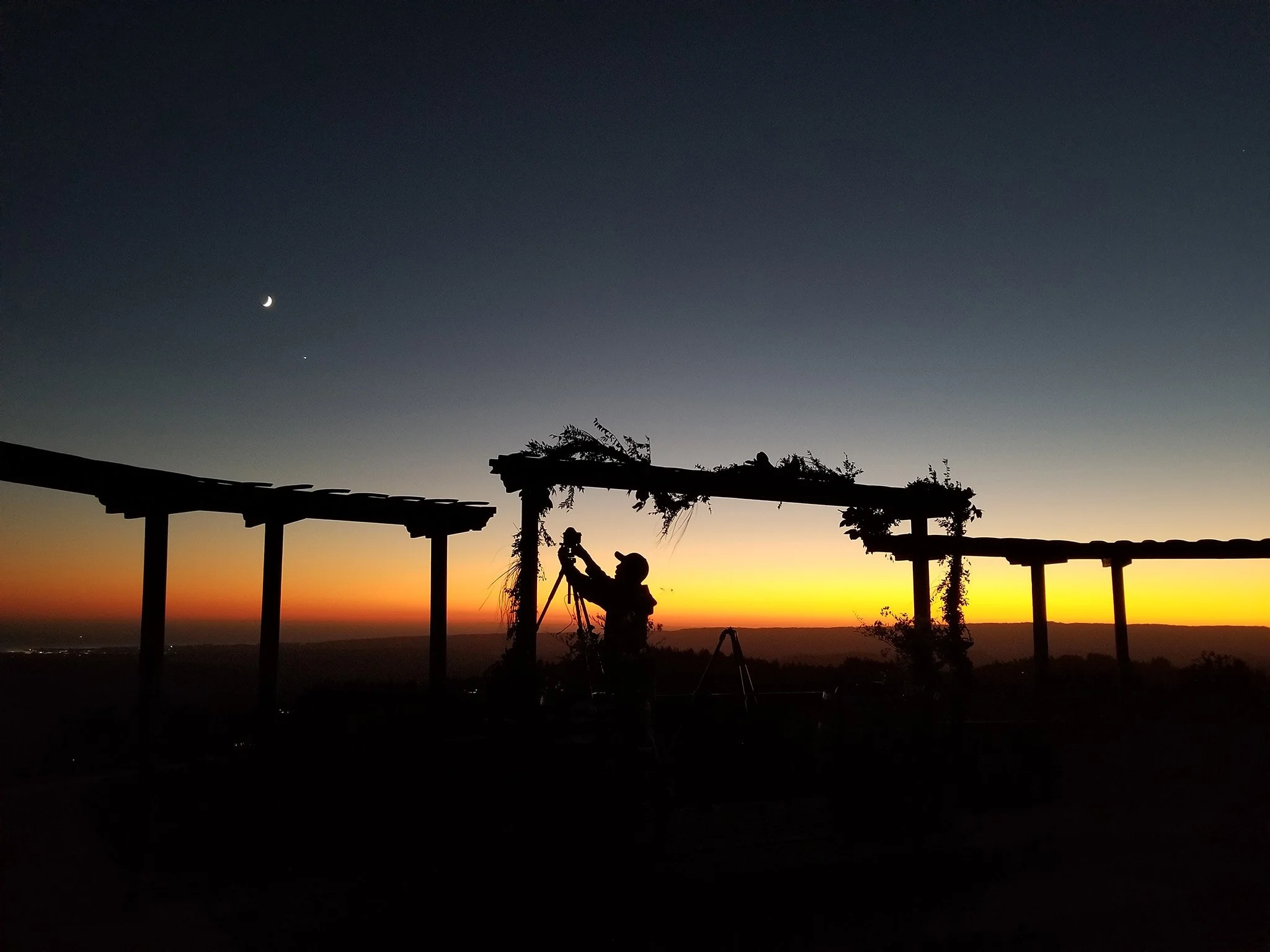Photographing the Milky Way with Light Pollution
California Milky Way | Sony Alpha a7R II + 20mm f/1.8 G @ f/1.8, ISO 1250, 10 sec x 50
My mom booked a stay nested in the Santa Cruz Mountains. After exploring the location during the day, I setup my camera as the sun set. At about 2500 feet about sea level, there was not any interesting foreground; so, I composed my photo to just include a little bit of the distant coastline and ridge of trees in the lower part of the frame. It was a nice and cool and crystal-clear night which made for great viewing conditions for the stars – aside from the light pollution. It was nice that the light pollution was partially masked by the marine layer, but it would have been cooler if there was a lot more fog.
Setting up my camera at twilight with the moon in the background. Photo by David Young.
To take this photo, I used my new Sony 20mm f/1.8 G lens that I bought on sale in the beginning of the year. And I was excited to try it out (especially for astrophotography) as this was the first time that I got to use this lens outside of my room. While not quite as wide as my other lens I previously used for astrophotography (16-35mm f/2.8 GM), it does have a larger aperture allowing me to capture an exposure at a shorter time to reduce star trailing and at a lower ISO for less noise.
Even with this brighter lens, the light pollution still washed out a good bit of the milky way. To create this photo, I stacked fifty 10 second exposures for a total exposure time of 8 minutes and 20 seconds. This allowed me to increase the signal to noise ratio and bring out more of the colors and details of the milky way. Additionally, this allowed me to reduce the haziness caused by the light pollution. After that, I blended a couple exposures for the foreground which I took earlier in the evening and a meteor that I also captured a bit earlier that night.
This photo captures the milky way along with the setting crescent moon and a meteor as well. The reason why the crescent moon looks like a full moon is because its reflected light is so bright comparatively to the starlight. Additionally, I was able to capture a meteor as well. This was the only meteor I saw that evening, and I distinctly remember seeing and hearing it whistle across the sky. This was not a major meteor shower; however, after looking through the PhotoPills app, I believe this meteor is part of the Southern Taurids.
A silhouette of my parents at twilight (pretty good for standing still for 3 seconds)
Overall, I am pleasantly surprised and satisfied with the detail and vibrancy in the final photo I created. Initially, I was not that excited as the milky way core was not quite as vibrant or detailed as I have previously seen it thanks to the amount of light pollution present; however, after playing around with stacking a bunch of consecutive photos, I realized the potential of the photos that I captured.
Finally, if I were to give a brief review of my experience using the Sony 20mm f/1.8 G for astrophotography, I would say it is the best value native Sony lens for wide angle landscape astrophotography. The build quality is great, and it is super small and light weight which makes it great especially if you are taking it on a long hike. And even at the corners of the frame wide open, the stars look great.


